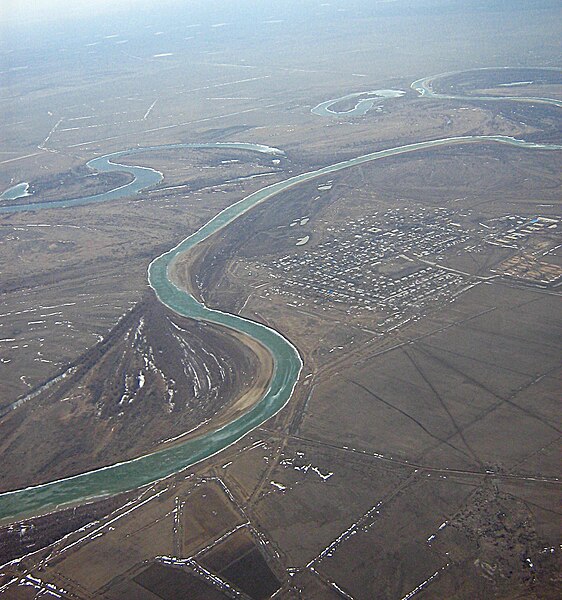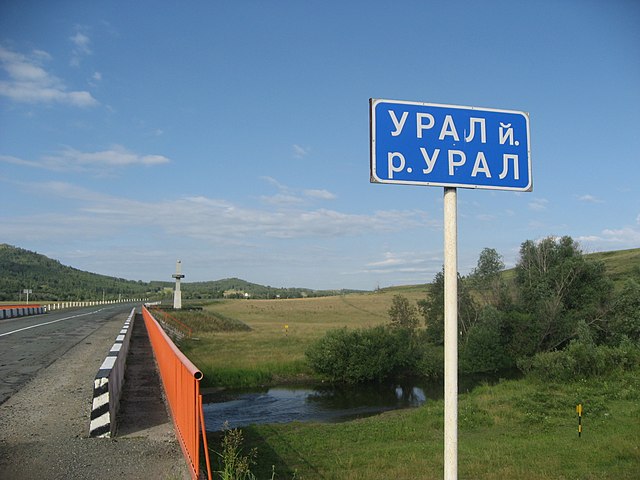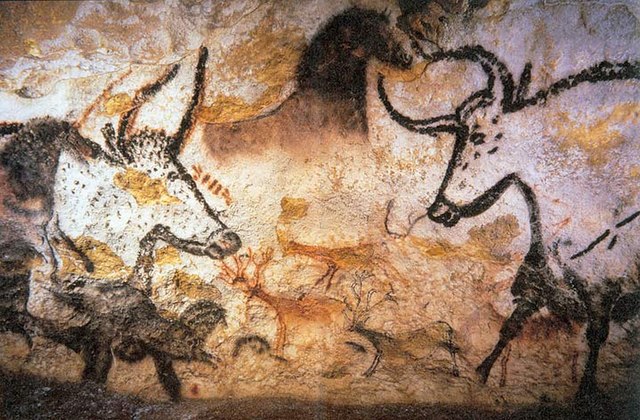The Ural, known before 1775 as the Yaik, is a river flowing through Russia and Kazakhstan in the continental border between Europe and Asia. It originates in the southern Ural Mountains and discharges into the Caspian Sea. At 2,428 kilometres (1,509 mi), it is the third-longest river in Europe after the Volga and the Danube, and the 18th-longest river in Asia. The Ural is conventionally considered part of the boundary between the continents of Europe and Asia.
The river Ural from an airplane between Uralsk and Atyrau, Kazakhstan
The tip of an old pike pole
The bridge across the Ural in the Uchalinsky District (Bashkortostan)
The "bird's-foot" ("digitate") delta of the Ural in the Caspian Sea
Europe is a continent located entirely in the Northern Hemisphere and mostly in the Eastern Hemisphere. It is bordered by the Arctic Ocean to the north, the Atlantic Ocean to the west, the Mediterranean Sea to the south, and Asia to the east. Europe shares the landmass of Eurasia with Asia, and of Afro-Eurasia with both Asia and Africa. Europe is commonly considered to be separated from Asia by the watershed of the Ural Mountains, the Ural River, the Caspian Sea, the Greater Caucasus, the Black Sea, and the waterway of the Bosporus Strait.
Depiction of Europa regina ('Queen Europe') in 1582
Paleolithic cave paintings from Lascaux in France (c. 15,000 BCE)
Stonehenge in the United Kingdom (Late Neolithic from 3000 to 2000 BCE)
The Parthenon in Athens (432 BCE)








